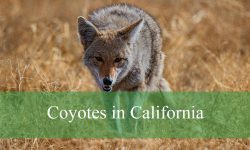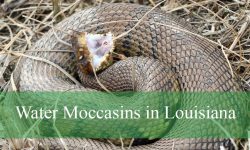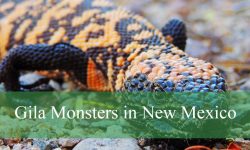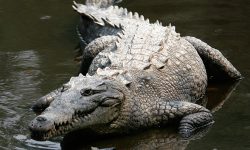In the misty forests, coastal cliffs, and winding rivers of Washington State, one of North America’s most iconic birds reigns supreme—the bald eagle (Haliaeetus leucocephalus). Known for its piercing eyes, majestic wingspan, and unmistakable white head, the bald eagle has long symbolized freedom and strength in the United States. But beyond its status as a national emblem, this incredible bird is full of surprising secrets—especially in the lush wilderness of Washington, one of its most important strongholds.
While many people picture bald eagles soaring over Alaska or nesting along remote mountain lakes, Washington is actually home to one of the largest populations of bald eagles in the lower 48 states. From the Puget Sound shoreline to the Cascade Mountains and the Olympic Peninsula, these raptors thrive in Washington’s varied ecosystems.
In this article, we’ll reveal fascinating, little-known facts about bald eagles in Washington—their habits, habitats, diet, migration patterns, and the critical role they play in the state’s natural environment. You’ll also learn how to spot them, protect them, and understand why their comeback story is one of the greatest conservation successes in American history.
What Makes Bald Eagles Special
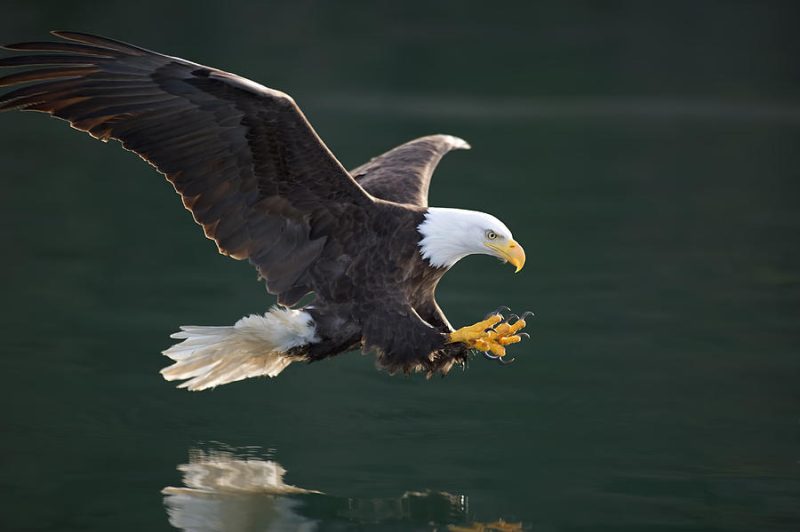
Physical Characteristics
The bald eagle is a striking sight. Adults have a wingspan of 6 to 7.5 feet and weigh between 8 and 14 pounds. Despite their size, they are graceful fliers, capable of soaring effortlessly for hours by riding thermals and updrafts.
Their name, “bald,” doesn’t mean hairless—it comes from an old English word meaning “white-headed.” Juvenile eagles, however, look very different: they are mostly dark brown with mottled white patches and only develop their famous white head and tail after 4 to 5 years. This gradual change often leads people to mistake young bald eagles for golden eagles.
Bald eagles have powerful yellow beaks, large talons, and exceptional eyesight—up to four times sharper than human vision. They can spot fish swimming below the water’s surface from hundreds of feet above.
Intelligence and Behavior
Bald eagles are more than hunters; they are strategists. They often scavenge carrion or steal prey from other birds like ospreys, earning them the nickname “pirates of the sky.” This opportunistic behavior doesn’t mean laziness—it’s an energy-saving adaptation that helps them survive Washington’s unpredictable winters.
Eagles also display remarkable loyalty. They mate for life and return to the same nesting sites each year, improving and expanding their enormous stick-built nests—some weighing over a ton!
Where to Find Bald Eagles in Washington
Prime Eagle Habitats
Bald eagles prefer habitats near water where fish are abundant. In Washington, they thrive around:
- Puget Sound and the San Juan Islands – a top location for wintering eagles feeding on fish and waterfowl.
- Skagit River Valley – famous for one of the largest seasonal gatherings of bald eagles in the continental U.S. during the winter salmon run.
- Olympic Peninsula – rich in coastal estuaries and old-growth trees ideal for nesting.
- Lake Chelan, Columbia River, and Hood Canal – all popular eagle-watching destinations with healthy fish populations.
These areas provide the perfect combination of tall nesting trees, clean water, and plentiful prey—a trifecta that supports strong bald eagle populations year-round.
Seasonal Movements
In Washington, bald eagles can be seen all year, but their numbers surge in winter, particularly from November through February. During this time, hundreds migrate from Canada and Alaska to feed on spawning salmon in the state’s rivers.
In spring and summer, many eagles settle into breeding territories, building massive nests—sometimes up to 10 feet wide—in tall Douglas firs or cottonwoods near lakes and rivers.
Diet and Hunting Behavior
What They Eat
Fish make up the majority of a bald eagle’s diet, but they’re not picky eaters. In Washington, their menu includes:
- Salmon, trout, and herring from the state’s rivers and coastal waters.
- Ducks, gulls, and small mammals such as rabbits and muskrats.
- Carrion, especially in winter when live prey is scarce.
Eagles often hunt by swooping low over the water, extending their talons to snatch fish with incredible precision. When competing for food, they’ve been known to steal catches from ospreys—a dramatic aerial chase that wildlife photographers love to capture.
Scavengers and Opportunists
While they are skilled hunters, bald eagles are also scavengers. Along Washington’s beaches and riverbanks, they frequently feed on dead salmon left behind after spawning. This role as a natural “cleanup crew” helps recycle nutrients into the ecosystem and prevents the spread of disease.
Their ability to switch between hunting and scavenging demonstrates their adaptability—one of the reasons the species has rebounded so successfully after near-extinction.
Breeding and Nesting in Washington
Mating and Nesting
Bald eagles typically mate for life, returning to the same nest each year unless it’s destroyed. Courtship involves spectacular aerial displays—spiraling flights and talon-locking dives that showcase both agility and trust.
Nests, called aeries, are built high in tall trees close to water. In Washington, these nests are often located in Douglas firs, cottonwoods, and cedars. Eagles add sticks and fresh greenery each year, and some nests grow large enough to support a full-grown human’s weight.
Raising the Young
The female lays 1 to 3 eggs, usually in February or March. Both parents share incubation duties for about 35 days. Chicks hatch covered in gray down and grow rapidly, reaching adult size in just 10 to 12 weeks.
By late summer, young eagles are ready to fledge (take their first flight). However, they often stay near the nest for weeks, learning essential survival skills from their parents before becoming fully independent.
The Bald Eagle Comeback Story
From Endangered to Abundant
Few wildlife stories are as inspiring as that of the bald eagle’s recovery. By the mid-20th century, eagles were on the brink of extinction due to habitat loss, hunting, and poisoning from the pesticide DDT. Their population in the lower 48 states dropped to just 400 nesting pairs.
After DDT was banned in 1972 and conservation laws strengthened, including the Endangered Species Act, bald eagle numbers began to rise. In 2007, the species was officially removed from the endangered list—a testament to decades of environmental effort.
Washington’s Conservation Success
Today, Washington supports more than 1,500 active bald eagle nesting territories, according to the Washington Department of Fish and Wildlife (WDFW). Strict protection of nesting areas, cleaner waterways, and sustainable fishing practices have all contributed to this success.
The bald eagle’s return stands as a shining example of how science-based conservation and public awareness can reverse even the steepest declines in wildlife populations.
Bald Eagles and Washington’s Ecosystem
Keystone Species
As apex predators and scavengers, bald eagles play a vital ecological role. They regulate fish and small animal populations while keeping river ecosystems clean by feeding on carrion. Their presence indicates healthy waters and abundant prey—a reflection of Washington’s environmental health.
Impact on Other Wildlife
Eagles share habitats with ospreys, herons, ravens, and various mammals. Their dominance influences the behavior and distribution of these species. For example, when eagles gather at salmon streams, smaller scavengers often wait until they’ve fed before approaching. This chain of interactions shapes the balance of Washington’s coastal and river ecosystems.
Bald Eagle Watching in Washington
Best Places to See Them
If you’re eager to witness bald eagles in the wild, Washington offers some of the best viewing opportunities in the country. Top locations include:
- Skagit River Eagle Festival (January) – near Rockport, where hundreds of eagles gather to feast on salmon.
- Lake Coeur d’Alene and Lake Roosevelt – hotspots during the winter months.
- Nisqually National Wildlife Refuge – near Olympia, ideal for spotting nesting pairs year-round.
- Hood Canal and Grays Harbor – excellent coastal viewing areas.
When to Go
The best time to see bald eagles in large numbers is December through February, when northern populations migrate south to Washington. Early morning and late afternoon are prime viewing hours as eagles hunt or perch in trees overlooking waterways.
Human Interaction and Safety
Respecting Their Space
While it’s thrilling to see bald eagles up close, human disturbance can harm their breeding success. Always keep a safe distance (at least 200 feet), avoid loud noises, and use binoculars or a camera zoom for observation.
Legal Protection
Bald eagles remain protected under the Bald and Golden Eagle Protection Act and the Migratory Bird Treaty Act. These laws prohibit killing, capturing, or disturbing eagles, their nests, or their eggs without special permits. Penalties for violations can be severe.
Coexisting with Eagles
If you live near nesting areas, avoid using pesticides or leaving fish scraps outdoors. Protecting water quality and fish habitats helps sustain eagle populations while reducing human conflict.
Fascinating Facts About Bald Eagles in Washington
- Bald eagles can lift prey weighing up to 4 pounds while flying.
- Their nests can be over 9 feet wide and reused for decades.
- They can fly at speeds up to 35–40 mph and dive at over 75 mph.
- Eagles have been observed “playing” with sticks in midair—behavior believed to strengthen pair bonds.
- Despite their regal appearance, they sometimes feed on garbage or roadkill when food is scarce.
- The bald eagle became the national bird of the United States in 1782, chosen for its strength and independence.
FAQs About Bald Eagles in Washington
Are bald eagles dangerous to people or pets?
No. Bald eagles rarely pose a threat to humans or pets. They may attack only if their nest is threatened.
Where are bald eagles most common in Washington?
They are most abundant near rivers, lakes, and coastlines, especially around Puget Sound and the Skagit River.
Do bald eagles migrate out of Washington?
Some remain year-round, while others migrate south from Canada and Alaska to spend winter in Washington.
How can I identify a bald eagle from a distance?
Look for a large bird with a white head and tail, broad wings, and slow, powerful wingbeats.
Are bald eagles still endangered?
No. They were removed from the endangered list in 2007, though they remain protected by law.
What should I do if I find an injured eagle?
Contact the Washington Department of Fish and Wildlife or a licensed wildlife rehabilitator immediately.
Conclusion
The bald eagle is more than a majestic symbol—it’s a living story of resilience, adaptation, and renewal. In Washington, these magnificent birds thrive among rivers, forests, and shorelines, standing as reminders of the state’s wild beauty and commitment to conservation.
From their elaborate courtship dances to their soaring flights above the Puget Sound, bald eagles embody the spirit of freedom that defines both nature and the American identity. The next time you spot one perched high in a Douglas fir or gliding over a fog-covered river, take a moment to appreciate not just its grandeur—but the incredible journey that brought it back from the brink of extinction.


